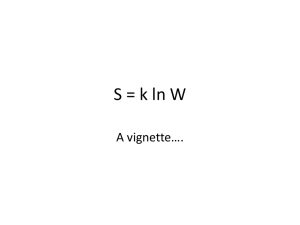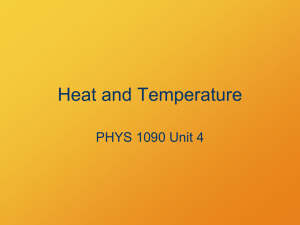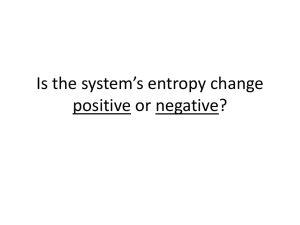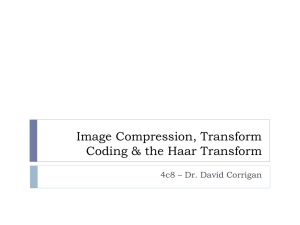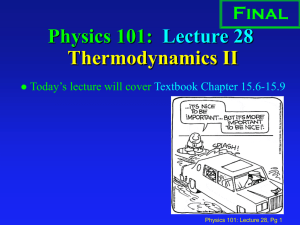midterm presentation
advertisement
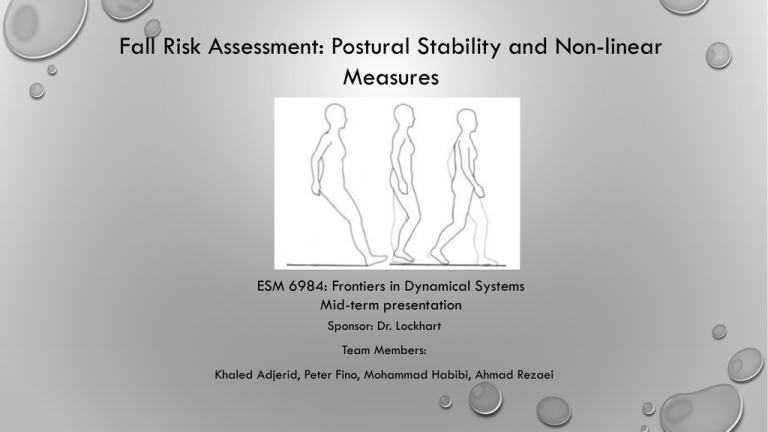
Fall Risk Assessment: Postural Stability and Non-linear
Measures
ESM 6984: Frontiers in Dynamical Systems
Mid-term presentation
Sponsor: Dr. Lockhart
Team Members:
Khaled Adjerid, Peter Fino, Mohammad Habibi, Ahmad Rezaei
FALL RISK ASSESSMENT
The injuries due to fall and slip pose serious problems to human life.
• Risk worsens with age
• Hip fractures and slips
• 15,400 American deaths
• $43.8 billion annually
TECHNICAL APPROACH
How can we assess fall risk in the elderly?
• Walking and balance is complex
• Multiple mechanisms involved in slip and fall
• Studies focused on age-related studies
No significant approach has been proposed to predict the fall risk
accurately.
WHAT DATA DO WE ACTUALLY HAVE?
• 60 second postural stability COP data
X
• Eyes open
ax
• Eyes closed
• 10 m walking
α
A
• Sit to stand
ay
β
• Timed up & go
D
Projected Path
γ
az
dz
dx
Z
Y
dy
TIME SERIES ANALYSIS
Several methods have been developed for complexity, correlation
and recurrence measures in time series:
• Shannon entropy (shen)
• Renyi entropy (ren)
• Approximate entropy (apen)
• Sample entropy (saen)
• Multiscale entropy (MSE)
• Composite multiscale entropy (CMSE)
• Recurrence quantification analysis (RQA)
• Detrended fluctuation analysis (DFA)
RENYI AND SHANNON ENTROPIES WILL BE
CALCULATED FOR COP MEASUREMENTS
Measure of uncertainty in the system over time
N
Gao M. et al, 2011
- Split COP X-Y field into M i unit areas
- COP Trajectory is N points long
- Each unit area M i is visited ni times
RENYI AND SHANNON ENTROPIES WILL BE
CALCULATED FOR COP MEASUREMENTS
Renyi Entropy:
Generalized form of entropy of order α
M
1
a
I=
log(å pi )
1- a
i=1
Where probability of trajectory
falling in 𝑀𝑖 is defined as
ni
pi =
N
Properties of Renyi Entropy:
• When qα=1
= 1, we have the Shannon entropy
• Zeroth term of I, 𝐼0 is the topological entropy,
1
• If 𝑃1 = 𝑃2 = 𝑃3 … = , then for all 𝑞, 𝐼 α= log(𝑚)
𝑚
• Areas with small probabilities are outliers and effects are mitigated with
α
higher order, q
α smaller
• Small probability areas can be weighted more by making q smaller
If 𝑷𝒊 ≠ constant, then Renyi is the preferred method, although Shannon is
still very insightful
RENYI ENTROPY IS A GENERALIZED FORM
OF SHANNON ENTROPY
Shannon Entropy:
M
I p i log p i
i 1
ni
pi =
N
(Base e)
When order of Renyi entropy 𝑞 = 1, we have the
Shannon entropy
Gao M. et al, 2011
APPROXIMATE ENTROPY (APEN)1
m: length of sequences to be compared
r: tolerance (filter) for matching sequences
N: length of time series
Where;
and
1- Steven M. Pincus, Approximate entropy as a measure of system complexity, Proc. Nati. Acad. Sci. USA Vol. 88, pp. 2297-2301, 1991.
APPROXIMATE ENTROPY (APEN)
Example for r=0, m=2, N=6
u={4, 6, 3, 4, 6, 1}
x2i={(4, 6), (6, 3), (3, 4), (4, 6), (6, 1)}
x3i={(4, 6, 3), (6, 3, 4), (3, 4, 6), (4, 6, 1)}
Step 1:
find the number of matches between the first sequence of m data points and all sequences of m data points.
No of matches: 2
Step 2:
find the number of matches between the first sequence of m+1 data points and all sequences of m+1 data points.
No of matches: 1
Step 3:
divide the results of step 4 by the results of step 3, and then take the logarithm of that ratio: 1/2
Step 4: Repeat step 1-3 for the remaining data points and add together all the logarithms computed in step 3 and
divide the sum by (m-N).
SAEN, MSE AND CMSE
• Sample entropy (SaEn): no self-matching so no bias in calculation of SaEn:
• Multiscale entropy (MSE):
Computing SaEn of yj for different scale factors:
• Composite multiscale entropy (CMSE):
Computing SaEn of yk,j and take average
for k from 1 to τ for different scale factors:
Figures adapted from: Shuen-De Wu et. al. , Time Series Analysis Using Composite Multiscale Entropy, Entropy, Vol. 15, pp. 1069-1084, 2013.
Recurrent Quantification Analysis (RQA)
Animation created by:
André Sitz (AS-Internetdienst Potsdam)
and Norbert Marwan (Potsdam
Institute for Climate Impact Research
(PIK))
(www.recurrence-plot.tk)
N. Marwan, M. C. Romano, M.
Thiel, J. Kurths: Recurrence Plots
for the Analysis of Complex
Systems, Physics Reports, 438(56), 237-329, 2007
Detrended Fluctuation Analysis (DFA)
Steps:
1. Find profile of signal about the mean
𝑖
𝑌 𝑖 =
𝑥𝑘 − 𝑥
𝑘=1
2. Divide profile into N non-overlapping segments
𝑁
𝑁 𝑠 =
𝑠
3. Calculate the local trend of each segment and find the variance
𝑌𝑠 𝑖 = 𝑌 𝑖 − 𝑝𝑣 𝑖
4. Calculate the variance of the entire series by average over all points i in
the vth segment
𝑠
1
𝐹𝑠2 𝑣 =
𝑌𝑠2 [ 𝑣 − 1 𝑠 + 𝑖]
𝑠
𝑖=1
5. Obtain DFA fluctuation by averaging over all segment and taking square
root
1
𝐹𝑠 =
2𝑁𝑠
1
2
2𝑁𝑠
𝐹𝑠2 𝑣
𝑣=1
6. Plot log 𝐹𝑠 - log s and determine slope to find α
Goldberger A L et al. PNAS 2002;99:2466-2472
SO WHAT’S NEXT?
• Process the collected data with methods previously described
• Look specifically at:
• Consistency of each method
• Sensitivity
• Statistical significance between certain groups within each method
• Obese vs normal BMI
• Fallers vs non-fallers and known fallers (post)
• Medications
• Statistical significance between each method to see consistency across board
QUESTIONS?
REFERENCES
• GAO J, HU J, BUCKLEY T, WHITE K, HASS C (2011) SHANNON AND RENYI ENTROPIES TO CLASSIFY EFFECTS OF MILD TRAUMATIC BRAIN
INJURY ON POSTURAL SWAY. PLOSONE 6(9): E24446. DOI:10.1371/JOURNAL.PONE.0024446
• PINCUS, S.M. AND A.L. GOLDBERGER, PHYSIOLOGICAL TIME-SERIES ANALYSIS: WHAT DOES REGULARITY QUANTIFY? AMERICAN
JOURNAL OF PHYSIOLOGY-HEART AND CIRCULATORY PHYSIOLOGY, 1994. 266(4): P. H1643-H1656.
• PINCUS, S.M., APPROXIMATE ENTROPY AS A MEASURE OF SYSTEM COMPLEXITY. PROCEEDINGS OF THE NATIONAL ACADEMY OF
SCIENCES, 1991. 88(6): P. 2297-2301.
• KANTELHARDT, J.W., ET AL., DETECTING LONG-RANGE CORRELATIONS WITH DETRENDED FLUCTUATION ANALYSIS. PHYSICA A:
STATISTICAL MECHANICS AND ITS APPLICATIONS, 2001. 295(3): P. 441-454.
• GOLDBERGER, A.L., ET AL., FRACTAL DYNAMICS IN PHYSIOLOGY: ALTERATIONS WITH DISEASE AND AGING. PROCEEDINGS OF THE
NATIONAL ACADEMY OF SCIENCES, 2002. 99(SUPPL 1): P. 2466-2472.
• RICHMAN, J.S. AND J.R. MOORMAN, PHYSIOLOGICAL TIME-SERIES ANALYSIS USING APPROXIMATE ENTROPY AND SAMPLE ENTROPY.
AMERICAN JOURNAL OF PHYSIOLOGY-HEART AND CIRCULATORY PHYSIOLOGY, 2000. 278(6): P. H2039-H2049.
• N. MARWAN, M. C. ROMANO, M. THIEL, J. KURTHS: RECURRENCE PLOTS FOR THE ANALYSIS OF COMPLEX SYSTEMS, PHYSICS REPORTS,
438(5-6), 237-329, 2007

